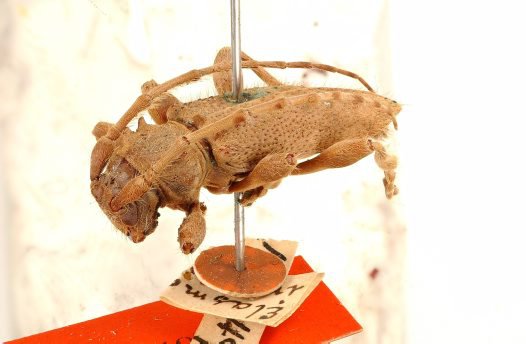The (other) Lord Howe insect
While undertaking a comprehensive survey of native and introduced fauna on the remote and beautiful Lord Howe Island, Australian Museum scientists have discovered a species of beetle not seen in nearly 140 years.

© Australian Museum
Oricopis insulana has proved to be an extremely rare sighting. A wood boring longhorn beetle that was previously thought extinct, it was originally described by an AM scientist in 1890 from a single specimen collected on Lord Howe the previous decade.
That holotype has remained in the AM’s entomology collection as the only evidence the species has ever existed – until now.
Oricopis insulana was a surprise discovery for AM’s malacologist Dr Frank Köhler, who spotted the beetle while searching for snail specimens in Lord Howe’s popular bushwalking destination, Stevens Reserve. The beetle was originally described by an AM scientist in 1890.
The large beetle (2cm) is sandy brown coloured and features three short spines on its sides behind its head. These structures help to disguise the beetle as a broken twig. With this discovery, it has crawled its way off the possibly extinct list.
Oricopis insulana seems to be a genuinely 'rare' species, with an adult that is either short-lived or difficult to find.
The discovery was one of over 2500 beetle specimens that AM scientists collected in the first two weeks of a major expedition to Lord Howe Island.
Other discoveries included a new species of the genus Lilioceris – a bright green leaf beetle with a purplish spot at the top of its wing casing, along with numerous species of rove beetles, chequered beetles, leaf beetles and longhorn beetles, many of them previously unrecorded on the island.
Thanks to the support of the AM Foundation, the Lord Howe expedition has seen 20 AM scientists from a range of research areas visit the island over the course of three months.











